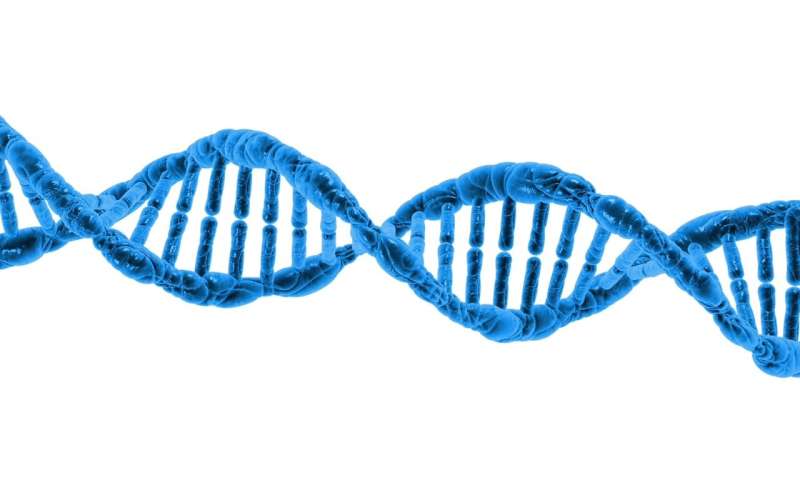
For the uninitiated in biological computing, the ZDNet headline may have suggested a language processing experiment gone haywire: "Test tube DNA computer calculates the square root of 900."
However, the headline accurately reflects the article, by Charlie Osborne, that researchers using 32 strands of DNA created a form of "biocomputer" that can store and process data. Not only that, but this biocomputer demonstrated "the advanced computational capabilities DNA-based architecture could bring to future PCs by calculating the square root of 900."
Long and short, a computer made from the DNA strands in a test tube can calculate the square root for numbers up to 900. The researchers have written a paper describing their work. "Programmable DNA Nanoindicator‐Based Platform for Large‐Scale Square Root Logic Biocomputing" appears in Small, which is described as a journal "of topics at the nano- and microscale at the interface of materials science, chemistry, physics, engineering, medicine, and biology."
Chunyang Zhou Hongmei Geng, Pengfei Wang and Chunlei Guo, the authors, stated why their research matters: To date, DNA‐based circuits involving tens of logic gates capable of implementing logic functions have been demonstrated experimentally, but the circuits are incapable of realizing complex mathematical operations, such as square root logic operations, which can only be carried out with 4 bit binary numbers.
"A high‐capacity DNA biocomputing system is demonstrated through the development of a 10 bit square root logic circuit. It can calculate the square root of a 10 bit binary number (within the decimal integer 900) by designing DNA sequences and programming DNA strand displacement reactions. The input signals are optimized through the output feedback to improve performance in more complex logical operations. This study provides a more universal approach for applications in biotechnology and bioengineering."
E&T carried a helpful translation:
E&T said, "the computer uses 32 strands of DNA to store and process information, calculating the square root of square numbers 1, 4, 9, 16, 25 and so on up to 900. The DNA computer uses hybridisation, which occurs when two strands of DNA attach to form double-stranded DNA...the researchers encode a number onto the DNA using a combination of ten building blocks, with each combination representing a different number up to 900. It is then attached to a fluorescence marker. The team then controls hybridisation in such a way that it changes the overall fluorescent signal so that it corresponds to the square root of the original number. The number can then be deduced from the color."
ZDNet, meanwhile, brought readers closer to the concept of biocomputers in general: "Biocomputers are loosely described as synthetic biochemical logic circuits and recent experiments have involved the creation of logic gates—used in microprocessors and microcontrollers, among other systems—to turn input into a logical output via DNA storage."
So did Angel Goni-Moreno and Pablo Ivan Nikel in Frontiers, as they explained biocomputing in simple terms. "Computation can be broadly defined as the formal procedure by which input information is processed according to pre-defined rules and turned into output data. Since this definition does not specify the type of information and rules involved in the process, it is applicable to electronic devices as well as to biological systems. In other words, biological systems do perform computations."
Biocomputing needs no introduction to those already familiar with years of research; in 2011 Scientific American was already reporting on advances in "DNA-based circuits."
The article talked about efforts at California Institute of Technology, for example, making use of "DNA nanostructures called seesaw gates to construct logic circuits analogous to those used in microprocessors."
Then the Caltech researchers subsequently built a DNA-based circuit that could play a simple memory game.
Scientific American explained: "Just as silicon-based components use electric current to represent 1's and 0's, bio-based circuits use concentrations of DNA molecules in a test tube. When new DNA strands are added to the test tube as 'input,' the solution undergoes a cascade of chemical interactions to release different DNA strands as 'output.'"
John Loeffler in Interesting Engineering discussed why the sustained interest in "DNA computing":
"For the past decade, engineers have come up against the harsh reality of physics in the pursuit of more powerful computers: transistors, the on-off switches that power the computer processor, cannot be made any smaller than they currently are. Looking beyond the silicon chip, an intuitive alternative is currently being developed using DNA to perform the same kinds of complex calculations that silicon transistors do now."
Loeffler on its potential: "The materials needed to synthesize DNA molecules are cheap and readily available and remain stable at room temperature and beyond. What DNA Computing is potentially able to achieve given DNA's resiliency and biological parallelism represents an essential step towards the future of computing."
So, will talk increase of "DNA computing" as apart from "silicon computing?" Guo, for one, said he believes DNA computers may one day replace traditional computers for complex computations, according to New Scientist.
More information: Chunyang Zhou et al. Programmable DNA Nanoindicator‐Based Platform for Large‐Scale Square Root Logic Biocomputing, Small (2019). DOI: 10.1002/smll.201903489
Journal information: Small
© 2020 Science X Network
Citation: Research continues showing gains in DNA computing (2020, January 4) retrieved 4 January 2020 from https://techxplore.com/news/2020-01-gains-dna.html
This document is subject to copyright. Apart from any fair dealing for the purpose of private study or research, no part may be reproduced without the written permission. The content is provided for information purposes only.
